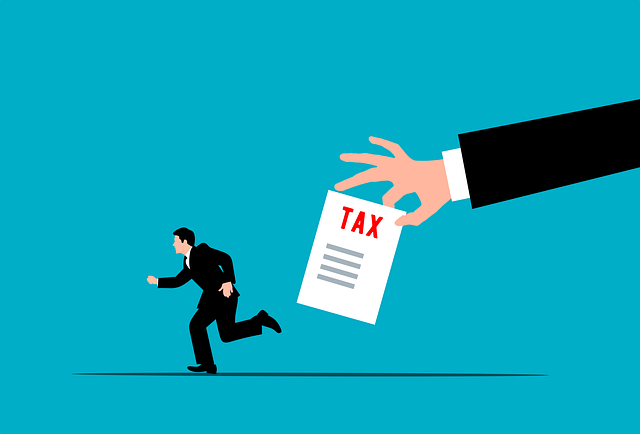Debt restructuring for individuals is a strategic process offering hope for managing overwhelming debt. By evaluating financial situations, implementing tailored solutions like refinancing or consolidation, and prioritizing long-term stability, people can regain control over their finances. This involves meticulous planning, financial discipline, and rebuilding credit responsibly to prevent future debt crises. Despite challenges, successful debt restructuring paves the way for a brighter financial future, emphasizing responsible money management practices.
Debt restructuring for individuals is a powerful tool to regain financial control. If you’re burdened by debt, understanding the debt review process can be life-changing. This comprehensive guide breaks down everything you need to know about restructuring your debts. From defining what it is and why it matters, to walking through each step of the process and exploring its benefits and challenges, we’ll equip you with knowledge to make informed decisions. Additionally, learn what follows after successful debt restructuring.
- What is Debt Restructuring?
- Why Consider Debt Restructuring?
- The Debt Review Process Step-by-Step
- Benefits and Challenges of Debt Restructuring
- Next Steps After Debt Restructuring
What is Debt Restructuring?

Debt restructuring is a strategic process designed to help individuals manage and reduce their debt obligations more effectively. It involves evaluating an individual’s current financial situation, identifying areas for improvement, and then implementing tailored solutions to make repayment more manageable. This process can include various strategies such as refinancing, consolidation, or even negotiating with creditors to modify existing terms.
For individuals facing overwhelming debt, restructuring offers a chance to regain control of their finances. By reorganizing debt into more affordable payment structures, individuals can prevent default and improve their overall creditworthiness over time. It’s a holistic approach that considers not just the amount owed but also an individual’s capacity to repay, aiming for long-term financial stability rather than merely providing short-term relief.
Why Consider Debt Restructuring?

Many individuals struggle with managing their debt, often leading to a sense of overwhelm and hopelessness. Debt restructuring offers a potential solution, providing an opportunity for financial fresh start. By considering this process, individuals can break free from the cycle of high-interest payments and overwhelming debt burdens. It allows for a more manageable repayment plan tailored to one’s capabilities, offering relief and improved cash flow.
Debt restructuring is particularly appealing as it provides a structured approach to dealing with creditors and financial institutions. Instead of facing mounting debts and potential credit score impacts, individuals can engage in negotiations, explore consolidation options, or even consider debt settlement strategies. This proactive step not only helps manage current debts but also prevents future financial crises by fostering better money management practices and responsible borrowing habits.
The Debt Review Process Step-by-Step

The Debt Review Process begins with an individual or family recognizing they have accumulated debts that are becoming unmanageable. This realization often stems from rising interest rates, unexpected life events, or impulsive spending habits. The first step is to gather all financial information, including statements from creditors and a detailed budget outlining current income and expenses.
Next, it’s crucial to assess the situation objectively. This involves evaluating the types of debts owed (e.g., credit cards, personal loans, mortgages), interest rates, minimum payment requirements, and any potential assets that could be used to repay. With this data, individuals can decide whether debt restructuring is the best course of action. If so, they should consult with a financial advisor or lawyer specializing in debt restructuring for individuals to explore various options like debt consolidation, refinancing, or negotiating terms with creditors.
Benefits and Challenges of Debt Restructuring

Debt restructuring for individuals offers a range of benefits, especially in providing a fresh financial start. This process allows borrowers to renegotiate their debt terms, often leading to lower interest rates and extended repayment periods. As a result, it can significantly reduce monthly payments, giving individuals more financial flexibility. Debt restructuring also has the potential to stop or slow down collection efforts from creditors, offering much-needed relief from stress and legal repercussions.
However, there are challenges associated with this approach. Restructuring often requires meticulous planning and financial discipline. Individuals must commit to adhering to new repayment plans, which might still result in long-term debt if not managed properly. Furthermore, restructuring can impact credit scores, making it more challenging to access credit in the future. It’s a complex process that demands careful consideration of one’s financial capabilities and goals.
Next Steps After Debt Restructuring

After successfully navigating the debt restructuring process, individuals can expect a renewed financial outlook. The next steps involve rebuilding and maintaining a healthy financial foundation. This includes creating and adhering to a realistic budget to ensure timely payments for all debts. It’s crucial to prioritize high-interest debts first while making consistent payments on others.
Regularly reviewing credit reports is essential to monitor progress, identify errors, and confirm that all accounts are accurately reflected. Building an emergency fund can also help prevent future financial strain. By setting aside a portion of income each month, individuals create a safety net for unexpected expenses, reducing the need to turn to debt.
Debt restructuring for individuals is a powerful tool to regain financial control. By understanding the debt review process, one can navigate through the challenges and reap the benefits of a structured repayment plan. This comprehensive guide has outlined the steps from defining your situation to post-restructuring management. Remember, seeking professional advice is key to making informed decisions about your financial future. With the right approach, individuals can transform their debt into manageable, achievable goals, paving the way for a brighter financial horizon.







